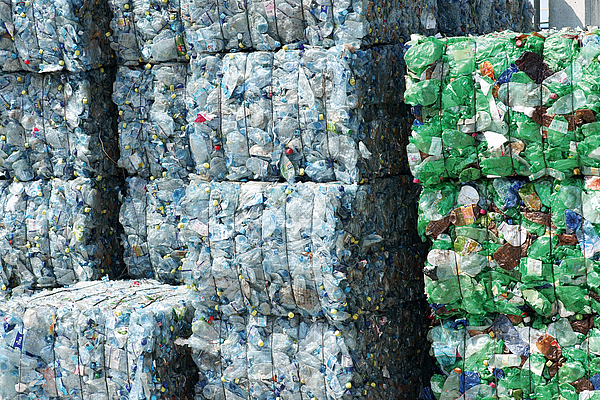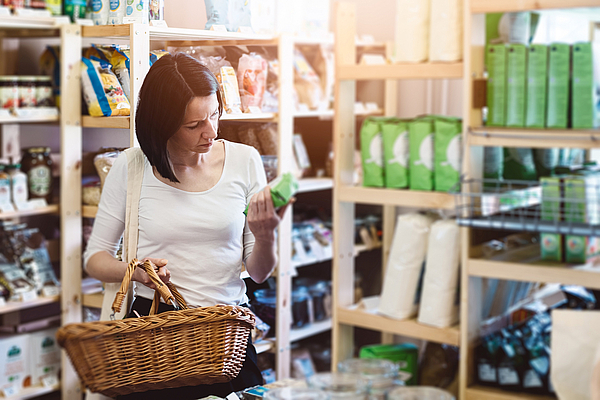

On the issue of environmentally-responsible packaging and sustainability efforts, one thing is for certain. There is no easy, “one solution fits all.”
Terms such as sustainability, recycling, bio-sourced, biodegradable, and others, are frequently interpreted differently by professionals in the packaging and plastics community. So, how can we possibly expect consumers to understand what these terms mean and the impact of their actions on the environment?
Let’s explore this topic further by using a few specific packaging types and attributes as examples.
PET BOTTLES
Over the past two decades, plastic bottle producers have reduced PET bottle weights by more than 50 percent in a wide variety of applications. PET is easily identify able by consumers as the material used to bottle carbonated soft drinks and water.
Its recognizable characteristics has made it one of the most collected and recycled materials in the waste stream. What is probably not well-known by consumers is that one of PET’s greatest attributes is that it can be easily recycled into rPET for use in next generation bottles at levels up to 100 percent. However, there is still signify cant room for improvement regarding the percentage of PET bottles that are collected. So what can the packaging community do to help improve the recycling profile and increase consumer understanding? Here are some thoughts...and even challenges.
Minimize the number of variations. The objective is to minimize contamination of the waste stream and help consumers easily identify the material and what do with it. Examples include:
-
¡ Design all PET containers so that they have minimum waste stream impact at end of lifecycle
-
¡ Use clear PET
-
¡ Use easily-removable labels to communicate brand
messaging, avor variations
-
¡ Encourage brand owners to communicate recycling
attributes of their package
-
¡ Incentivize consumers to collect/return PET
-
¡ Promote that these used containers can have multiple
future lifecycles as rPET
-
¡ Work collaboratively throughout the package development,
use and recycling chain to improve the quality of the
stream and maximize reclaimed percentages
-
¡ Work with suppliers of additives, colorants, etc.
to encourage them to develop materials with no environmental impact
The ultimate goal is to improve both the quality and quantity of PET bottles that make it back through the cycle to be reused in new generation packaging and other applications.

Fig 1: In addition to the challenges relating to the difficulty of recycling color, additives and labels, the overall quality of bales remain a major challenge.
COFFEE CAPSULES
This packaging type is beloved by many consumers and disliked by others for its perceived packaging waste. This is a perfect example of how a single-serve, convenience package can be viewed negatively because the entire lifecycle of the product and package are not understood. The frequently overlooked consideration here is the amount of energy it takes to produce coffee. In fact, as much as 80 percent of the energy usage comes from the processing, and not the packaging side of the equation. Coffee needs to be grown, harvested, sorted, washed, roasted and shipped before it even makes it to the packaging stage.
The downside to traditional coffee brewing is that a pot typically sits there for hours after it is made. The leftover coffee frequently grows cold, is not consumed and ultimately poured down the sink. Just the opposite happens with capsules, which are designed for single use and immediate consumption.
Coffee capsules are a perfect example of incorrect consumer perception that the package is the environmental bad guy, when in fact, coffee consumed via single-serve capsule has a much lower negative environmental footprint than all of the energy waste that occurs when coffee brewed in a traditional manner is discarded.
That is not to say that there are not improvements that can be made to this packaging type. One of the biggest challenges is getting the barrier right for the desired brand attributes in a specific geographic region. Tastes vary across the globe. In some areas, lower barriers yield the desired flavor profile; in others more barrier is required.
We are also seeing some movement toward molded fiber capsules. However, molded fiber doesn’t provide good barrier attributes and frequently needs to be paired with a lamination.
This category is also one where biodegradable pods might also have a place. It’s a great example of both product and package being compostable.
The other issue with coffee capsules is collection. PET bottles, for example, can easily be collected and baled due to their size. The same approach would not work with capsules. (The APR’s guidelines calls for a minimum of 3-inches in one of the dimensions of the individual package to facilitate bailing.) That’s when brand owner creativity needs to come into play.
Nestlé's Nespresso is a perfect example of that. The company provides a bag in its coffee pod box for the consumer to collect the used pods and mail back to the manufacturer. The bene ts are multifold. The consumer participates in the process and sees the value. The manufacturer is able to reclaim valuable material, such as aluminum foil and the creation of a successful closed loop cycle offers bene ts for both users and producers. Pepsi is also using a similar solution for the recently-launched Drink nity pod.
It’s this type of progressive, closed loop system that brand owners across the globe should consider for package types where it would be feasible to create a return method.

Fig 2: With today’s consumers desire for fresh foods increasing, as well as the related actual logistic and real time data, the need for longer shelf life duration for many packaged items could be evaluated to see if the amount and types of barriers that hinder recyclability are actually needed.
BULK CONTAINERS
On the opposite side of the size equation are multiserve solutions such as the rigid PET beer keg. The driver here was to create a replacement for metal kegs which would eliminate the need to clean them between fills and also reduce transport carbon footprint. Today it is common for beer to be delivered to bars in up to 30 liters and larger in PET kegs. The conversion to PET beer kegs is a good example that one solution doesn’t fit all. Oftentimes it is ideal to rethink the way product is distributed and consumed.
Part of this consideration is what else is required to deliver desired shelf life. In this instance, an option is to combine a rigid PET keg (which provides mechanical resistance and key transportation attributes) with a flexible liner to provide light and oxygen barrier. This enables easy separation at end of life to facilitate recycling. However, the collection issue is one that still remains.
SHELF LIFE
Shelf life has been a critical consideration for as long as packaging has been around. Going back in time to the Napoleonic Wars, the metal food can was invented to provide nourishment to men in the eld. In more recent times, the center aisle section of the store— filled with metal cans and folding cartons—is losing retail space to the ever growing fresh, refrigerated food section.
The question then becomes, do these packages have the correct barrier attributes? Have they been over engineered to accommodate a longer, obsolete shelf life that is 12 months or longer? Or have the barrier requirements been carefully thought through to provide the right attributes for the shorter shelf life intended by these products?
If you can simplify the package by removing unneeded oxygen barrier, additives and layers, you then end up with a structure that is easier to recycle.
IMPROVED COMMUNICATION
At the root of all of these issues is a need for improved communication between suppliers/converters and brand owners, as well as brand owners to consumers. All of us in the packaging community need to make wiser choices that will have a more positive impact on the waste stream and on consumers perception of the packaging they purchase.
We also need to do a better job of engaging consumers in the process by providing an easy path to recycling, as well as communicating with them the positive environmental attributes of the packaging that has been chosen to protect their product.
The comPETence center provides your organisation with a dynamic, cost effective way to promote your products and services.

magazine
Find our premium articles, interviews, reports and more
in 3 issues in 2025.


